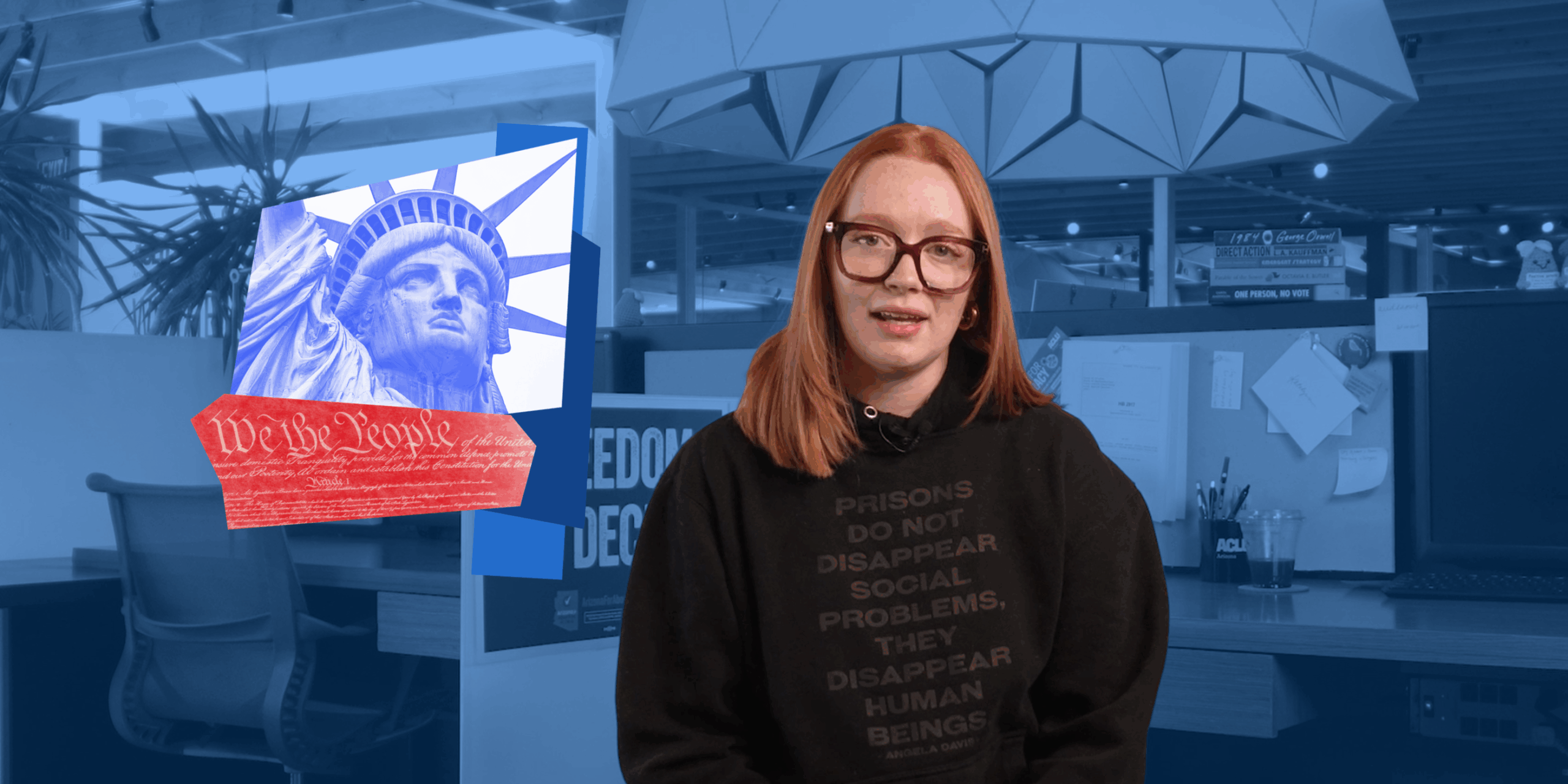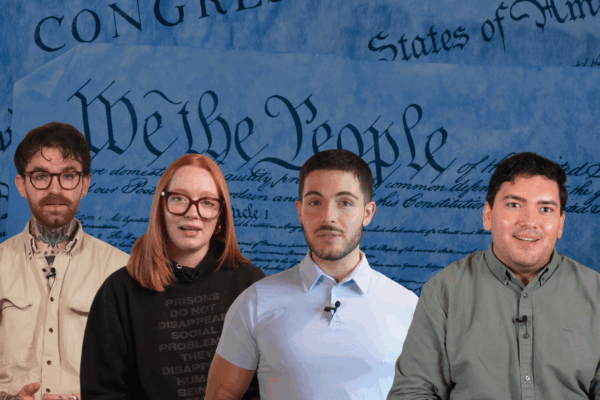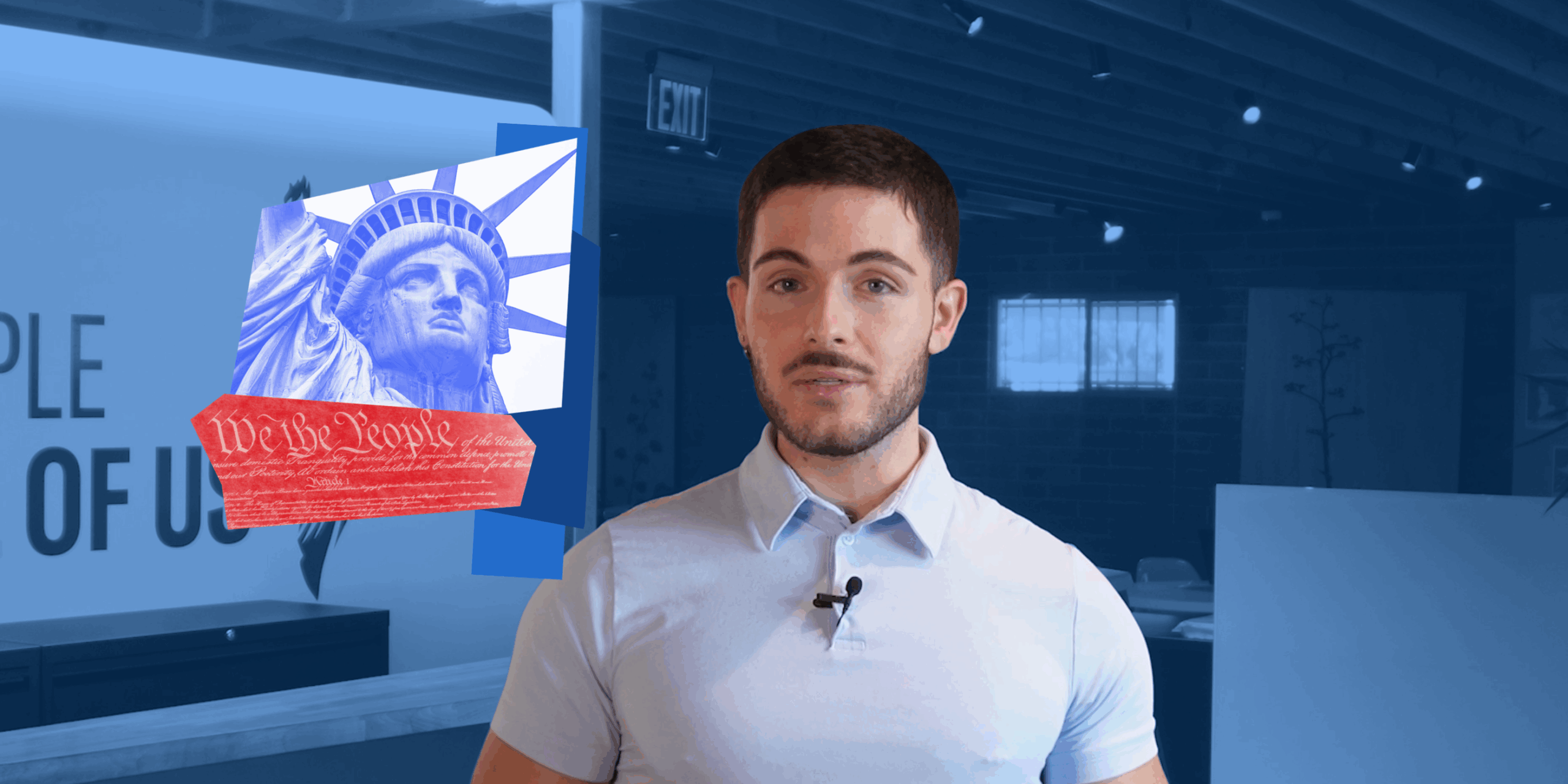Picture this: It’s your first day at a new school. You’re still figuring out where to sit and wondering which hallway leads to the cafeteria when your teacher says, “Everyone, bow your heads for prayer.”
You don’t practice this religion. You don’t even know the words to the prayer. Now what? Are you supposed to follow along? Can you just stay silent? Can a public-school teacher even say that?
These kinds of questions are at the heart of one of the most important freedoms guaranteed by the U.S. Constitution: the freedom of religion. But what does that freedom really include and where are its limits?
Let’s break it down.
What the First Amendment Says about Religion
If you flip to the First Amendment in your pocket Constitution, it reads:
“Congress shall make no law respecting an establishment of religion, or prohibiting the free exercise thereof…”
These 16 words are split into two core ideas:
- The Establishment Clause: the government can’t establish an official religion or promote religion over non-religion.
- The Free Exercise Clause: the government can’t stop you from practicing your faith.
Think of these as constitutional bookends –one keeps religion out of government. The other keeps the government out of your religion.
What That Looks Like in Real Life
Let’s return to our classroom scenario. If you’re in a public school – a government-funded institution – your teacher leading a prayer is unconstitutional.
That was decided in the 1962 landmark Supreme Court case Engel v. Vitale. The ruling was clear: public schools cannot organize or promote prayer.
Why? Because the government isn’t supposed to favor one religion over others.
On the flip side, you have the right to practice your faith, or not practice any at all. That means you can wear religious regalia like a hijab, a yarmulke, or a cross necklace. You can go to a mosque, church, synagogue, or nowhere at all. Your beliefs are your business and the government is supposed to stay neutral. Not hostile. Not supportive. Just out of the way.
What were the founders thinking?
The U.S. wasn’t born out of thin air. Many early settlers came here to escape religious persecution. Some were jailed, fined, or tortured in Europe for their beliefs.
So when it came time to draft the Constitution, the founders intentionally separated religion from government. Thomas Jefferson even described this as building a “wall of separation between church and state.”
That ideal has helped religious freedom and diversity grow in the U.S. for nearly 250 years. But that doesn’t mean the country has always gotten it right.
America’s Complicated Record on Religion
Let’s be honest. While the First Amendment offers strong protections, the U.S. has a history of failing to live up to its own promises:
- Forced conversion of Indigenous peoples
- Anti-Catholic riots
- Waves of antisemitism and Islamophobia
Even today, we’re still figuring out what true religious freedom looks like in practice.
Take, for example, Church of the Lukumi Babalu Aye v. City of Hialeah (1993). The city passed laws targeting the Santería religion’s practice of animal sacrifice. The Supreme Court ruled those laws unconstitutional, because they clearly discriminated against a specific faith.
So, What Are the Rules?
The government can accommodate religion. That means things like giving religious holidays off, allowing faith-based attire, or providing halal/kosher meals in prison.
The government cannot promote religion. No mandatory school prayers. No Ten Commandments statue at City Hall. No “official religion of the U.S.” Period.
You can’t break the law and use religion as a shield.You can’t rob a bank and say, “It’s part of my faith.” Laws still apply, even to those who practice religion.
Landmark Cases That Shaped Religious Freedom
Let’s explore a few key court decisions that shaped how we understand the First Amendment today:
Engel v. Vitale (1962)
Ruled that public schools can't lead students in prayer, even if it's “non-denominational.” A major win for the Establishment Clause.
Wisconsin v. Yoder (1972)
The Court sided with Amish families who pulled their kids from school at age 14 for religious reasons, overriding a state law requiring attendance until 16. This was a big case for the Free Exercise Clause.
Employment Division v. Smith (1990)
Two Native American men were denied unemployment after using peyote in religious ceremonies. The Court said the state could enforce its drug laws, even if those laws incidentally burdened religious practice. This decision narrowed the scope of religious protections and sparked major debate.
Fast forward to more recent cases, like Brush & Nib Studio v. City of Phoenix (2018), where a business refused to create wedding invitations for same-sex couples, citing religious beliefs.
Similarly, Masterpiece Cakeshop v. Colorado Civil Rights Commission involved a baker who declined to make a cake for a gay couple’s wedding.
In both cases, higher courts ended up siding with the business owners, raising a tough question:
when religious freedom comes into conflict with anti-discrimination laws, which one wins?
There’s no easy answer. These are the kinds of complex legal gray areas where rights clash against one another. And they’re exactly why we have courts: to keep parsing, refining, and rebalancing.
Where the ACLU Stands
Organizations like the ACLU and the ACLU of Arizona work to protect your right to believe what you want, while also making sure religious freedom isn’t used as an excuse to harm others.
In Arizona, that means:
- Challenging school prayer in public classrooms or school board meetings
- Ensuring religious accommodations in public institutions and prisons
- Opposing efforts to deny services based on someone’s religion or lack of it
At the center of our advocacy, we hold the position that people have the right to maintain whatever religious beliefs they want, but shouldn’t use their religious liberty to to deny someone else their rights.
Freedom of Religion: Know Your Rights
The First Amendment doesn’t give religion special privileges — but it does provide strong protections for your freedom to believe, practice, or opt out entirely.
Just remember:
- The government can’t force you to pray.
- Your beliefs are your own.
- And no one has the right to impose their religion on you.
In our next post, we’ll explore the Freedom of Assembly and what happens when people take their message to the streets.
Until then, remember: you have rights. Make sure you know them.






